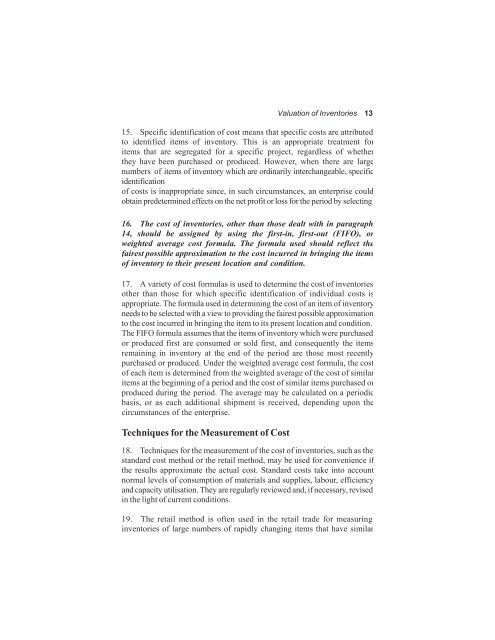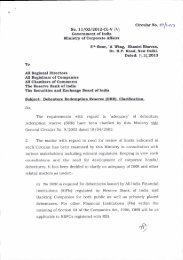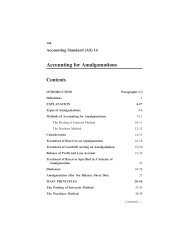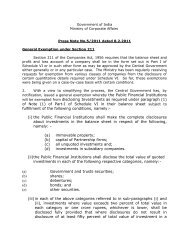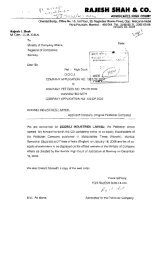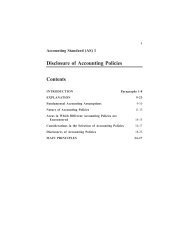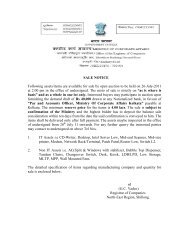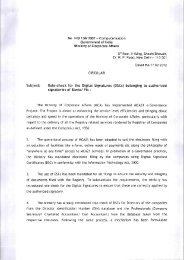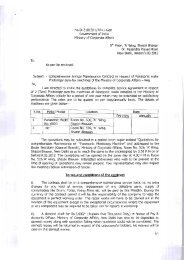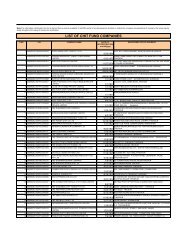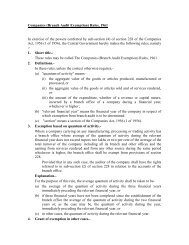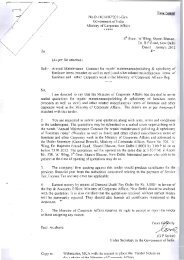Accounting Standard 2; Valuation of Inventories
Accounting Standard 2; Valuation of Inventories
Accounting Standard 2; Valuation of Inventories
Create successful ePaper yourself
Turn your PDF publications into a flip-book with our unique Google optimized e-Paper software.
<strong>Valuation</strong> <strong>of</strong> <strong>Inventories</strong> 13<br />
15. Specific identification <strong>of</strong> cost means that specific costs are attributed<br />
to identified items <strong>of</strong> inventory. This is an appropriate treatment for<br />
items that are segregated for a specific project, regardless <strong>of</strong> whether<br />
they have been purchased or produced. However, when there are large<br />
numbers <strong>of</strong> items <strong>of</strong> inventory which are ordinarily interchangeable, specific<br />
identification<br />
<strong>of</strong> costs is inappropriate since, in such circumstances, an enterprise could<br />
obtain predetermined effects on the net pr<strong>of</strong>it or loss for the period by selecting<br />
16. The cost <strong>of</strong> inventories, other than those dealt with in paragraph<br />
14, should be assigned by using the first-in, first-out (FIFO), or<br />
weighted average cost formula. The formula used should reflect the<br />
fairest possible approximation to the cost incurred in bringing the items<br />
<strong>of</strong> inventory to their present location and condition.<br />
17. A variety <strong>of</strong> cost formulas is used to determine the cost <strong>of</strong> inventories<br />
other than those for which specific identification <strong>of</strong> individual costs is<br />
appropriate. The formula used in determining the cost <strong>of</strong> an item <strong>of</strong> inventory<br />
needs to be selected with a view to providing the fairest possible approximation<br />
to the cost incurred in bringing the item to its present location and condition.<br />
The FIFO formula assumes that the items <strong>of</strong> inventory which were purchased<br />
or produced first are consumed or sold first, and consequently the items<br />
remaining in inventory at the end <strong>of</strong> the period are those most recently<br />
purchased or produced. Under the weighted average cost formula, the cost<br />
<strong>of</strong> each item is determined from the weighted average <strong>of</strong> the cost <strong>of</strong> similar<br />
items at the beginning <strong>of</strong> a period and the cost <strong>of</strong> similar items purchased or<br />
produced during the period. The average may be calculated on a periodic<br />
basis, or as each additional shipment is received, depending upon the<br />
circumstances <strong>of</strong> the enterprise.<br />
Techniques for the Measurement <strong>of</strong> Cost<br />
18. Techniques for the measurement <strong>of</strong> the cost <strong>of</strong> inventories, such as the<br />
standard cost method or the retail method, may be used for convenience if<br />
the results approximate the actual cost. <strong>Standard</strong> costs take into account<br />
normal levels <strong>of</strong> consumption <strong>of</strong> materials and supplies, labour, efficiency<br />
and capacity utilisation. They are regularly reviewed and, if necessary, revised<br />
in the light <strong>of</strong> current conditions.<br />
19. The retail method is <strong>of</strong>ten used in the retail trade for measuring<br />
inventories <strong>of</strong> large numbers <strong>of</strong> rapidly changing items that have similar


